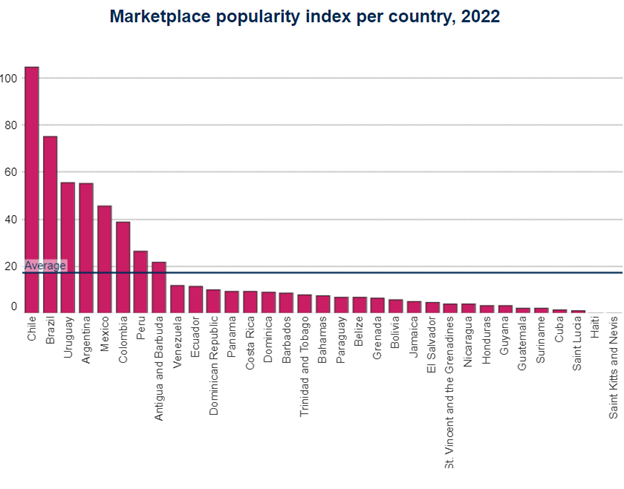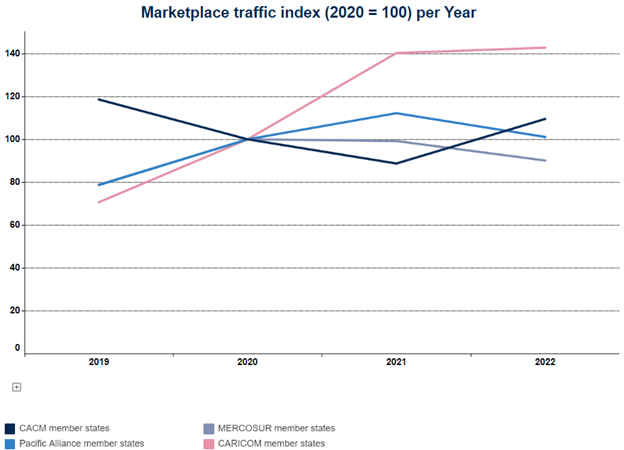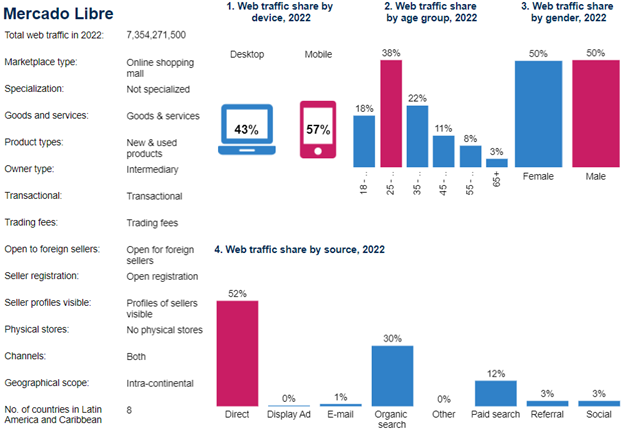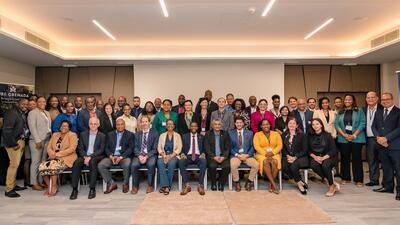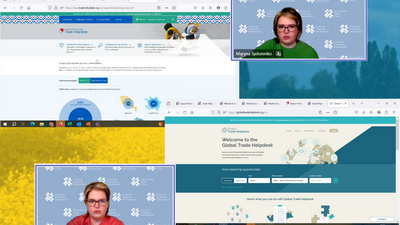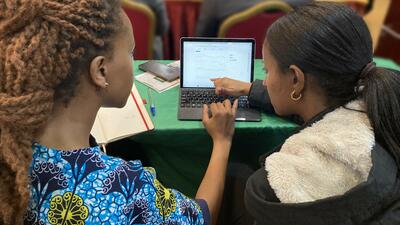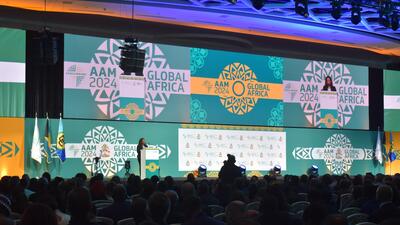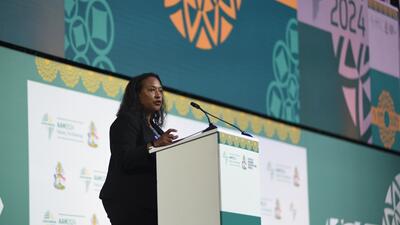
Data insights for growing e-commerce
Exploring the e-commerce landscape in Latin America and the Caribbean
Since the COVID-19 pandemic, Latin America and the Caribbean (LAC) has been one of the fastest-growing regions for business-to-consumer (B2C) e-commerce.
In 2020 e-commerce growth accelerated, from a previously low level, partly due to high mobility restrictions. However, except for a few official and costly consultancy firms’ estimates, no public data was available to analyse e-commerce and its development in this region.
In December 2022 the International Trade Centre, the Economic Commission for Latin America and the Caribbean, and the Amsterdam University of Applied Sciences launched a free online dashboard - the Latin America and Caribbean Marketplace Explorer.
The tool allows users to explore dimensions of goods oriented B2C e-commerce in the LAC region. It covers almost 900 marketplaces where firms and individuals sell goods through almost 3,000 country-targeted websites.

These insights allow market analysts and policymakers to understand the impact of strategies on the growth of e-commerce in the region. For instance, comparing COVID-19 restrictions with marketplace visits highlights how e-commerce can be stimulated or stifled.
Although many markets adopting e-commerce were boosted by these restrictions, some were not. Simply put, if the basic capabilities for e-commerce were not present in the country, the boom did not happen.
Once restrictions ended, some of the rush to adopt e-commerce abated, and several e-commerce markets declined in the more “normal” business conditions.
Although this needs to be understood in the local context the tool helps explain where and how economic activity online may have been stifled, and where growth may yet come from.
For small businesses in the LAC region, the tool offers valuable information on marketplaces and a rapid answer as to whether a given site is open to vendors from another country. Also, profiles help the small business understand the specialty of these marketplaces.
A great deal of traffic flows to older, classifieds sites which may be important channels for small local businesses.
But the trend is toward sophisticated online shopping malls that offer integrated payments and logistics solutions. These are demanding for small businesses as they require efficient customer service as well as competitive pricing and product offerings.
Small businesses need to decide whether they are willing to invest in the capabilities necessary for these advanced platforms, or instead find a niche among smaller marketplaces.

The Explorer excludes marketplaces outside the region, such as Amazon.com and Aliexpress.com but includes data from 2019-2022 on visitors' traffic and characteristics, such as age group, gender, and country of origin. It shows marketplace features and ecosystem indicators, such as internet connectivity.
It consists of three dashboards: the first is on e-commerce indicators by country and region, showing the number and types of marketplaces. For example, (in decreasing order) Brazil, Mexico, Argentina, Colombia, Chile and Peru hosted almost half the region’s websites in 2022. This dashboard also presents the marketplace popularity index, referring to the average number of marketplace visits per internet user in 2022. In eight countries, this average exceeds 18 visits per year (see figure).
The second dashboard is on marketplace traffic trends. It shows, for example, that LAC marketplaces received 24,1 billion visits in 2022. Total visitor traffic grew 25% in 2020, but its expansion decelerated to 3% in 2021.
In 2022, traffic fell by 8%. Subregions show quite different growth trends from 2020 to 2022 (see Figure below): traffic grew most in CARICOM, where e-commerce activity was the smallest before the pandemic. In Mercosur’s more mature e-commerce market, traffic grew except for 2022. In the Pacific Alliance, traffic only grew in 2020, but fell in the following years. In the Central American Common Market (CACM), traffic fell in 2020 and 2021, but recovered in 2022.
The third dashboard shows figures on each of the almost 900 marketplaces in the region. The transactional marketplace Mercado Libre is the largest with operations in eight countries (in addition to operating classified sites in another 10 countries).
The Latin America and Caribbean Marketplace explorer is one of a suite of tools that also cover Africa and, later this year, Asia Pacific.
The International Trade Centre is leading an effort alongside the Regional Economic Commissions to upgrade our collective understanding of e-commerce markets: these tools will expand and add further data and analytics in the future.




